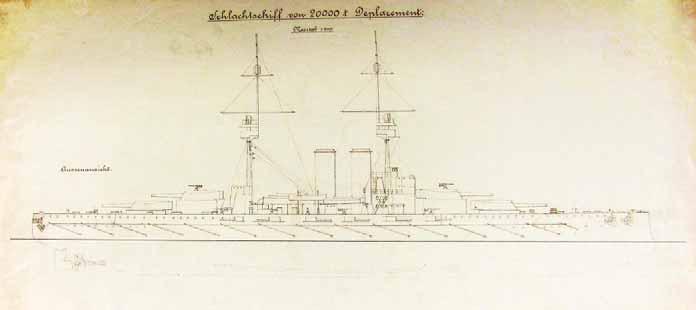the austro-hungarian – italian naval arms race
From 1814 until its end the Navy of the Habsburg Empire always viewed the fleets of the Italian states and after 1861 the Royal Italian Navy (Regia Marina Italiana) as its main rivals and enemies. In the 19th century the series of conflicts at the sea between Italy and Austria began in 1821 and culminated in the Battle of Lissa in 1866. The signing of Triple Alliance in 1882 made the two rivals allies however, mutual suspicions and areas of conflict remained between both powers. From 1904 a new naval arms race centered on the construction of battleships began between Austria-Hungary and Italy, which would intensify later with the appearance of the dreadnought-type battleships. During World War I in May 1915, the two former allies became enemies and the Austro-Hungarian – Italian rivalry on the Adriatic ended with an Italian victory and with the dissolution of the Dual Monarchy. In the first half of the 19th century the Austrian fleet was much weaker than the fleet of the Kingdom of Two Sicily (Naples) or of the Kingdom of Sardinia. In the spring of 1848, soon after the outbreak of the Revolution of Venice the combined fleets of Sardinia and Naples established a naval blockade of Trieste. Only the indecisivity of the Italian commanders and the inter-allied conflicts spared the Austrian fleet from total annihilation. The lessons of the revolutions of 1848 were learned in Vienna, and in April 1850 the Flottengesetz (Fleet Act) was sanctioned by the Emperor. This was the one and only Fleet Act in the history of the Habsburg Empire’s navy. Under the Flottengesetz six ships of the line and ten frigates would have been built in the next dozen years, but as it was usual in Austria, as the memory of the revolution and of the humiliation at the sea faded, the execution of the construction program slowed down. The energetic Archduke Ferdinand Max in his first years of command tried to accelerate the building of new warships, but even he achieved moderate success. After nearly a decade on the eve of Franco-Austrian War of 1859, only three frigates ordered under the Flottengesetz and a ship of
the line still under construction had been realized from the building program of 1850. The advent of the ironclads and the creating of the Kingdom of Italy with the unification of the majority of the territories of Italy helped Archduke Ferdinand Max to push through an ironclad building program in Austria. In the spring of 1861, the Kingdom of Italy was proclaimed and the Royal Italian Navy (Regia Marina) was established. The first Italian ironclads were ordered a little earlier, in 1860 by the Kingdom of Sardinia. Until the summer of 1866 when the war broke out between the Habsburg Empire and the Prussian-Italian alliance, the Italian Navy built or purchased twelve ironclads, while the Austrian Navy built only seven. The departure of Archduke Ferdinand Max in 1864 made things worse for the Austrian Navy, leaving it without a leader and ridden with internal intrigues. Fortunately for the Navy on the eve of the war of 1866 Kontreadmiral Wilhelm von Tegetthoff was appointed to the commander of the operative fleet. While in the war Austria suffered a catastrophic defeat at Königgrätz on 3 July from the Prussians, it defeated Italy on the land (Custoza) and on the sea. When the Italian fleet began to siege the Austrian forts on the Lissa Island Tegetthoff ignoring the order from Vienna to keep the fleet in port put to sea with the operative fleet. On 20 July arriving at Lissa he immediately attacked the Italians with his inferior force. Tegetthoff achieved a great victory over the Italian fleet, sinking two ironclads without losing a single ship. The victory was achieved partly as a result of Tegetthoff ’s bold tactic, partly as a result of the serious antagonism between the Italian admirals. Bismarck’s intention to not to humiliate the Habsburg Empire and the Austrian victories over Italy saved the Empire’s Adriatic coastline from further Italian territorial gains as in the Peace of Prague only Veneto was ceded to Italy. The War of 1866 closed the series of open conflicts between the Habsburg Empire and Italy in the 19th Century. After the war the Italian Navy fell into a seven year period of decline. Having already overspent considerably its naval budgets in the years before
— 22 —






























